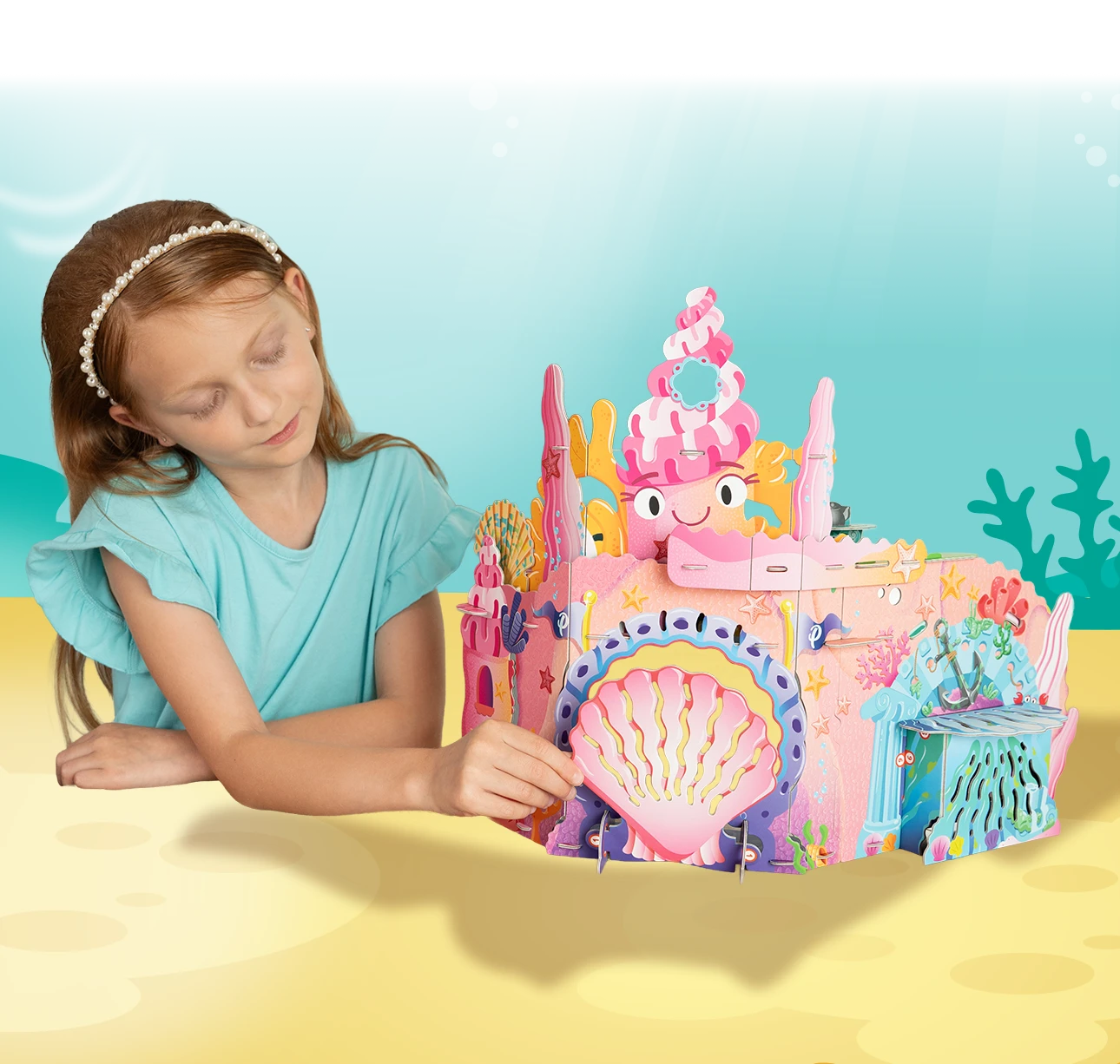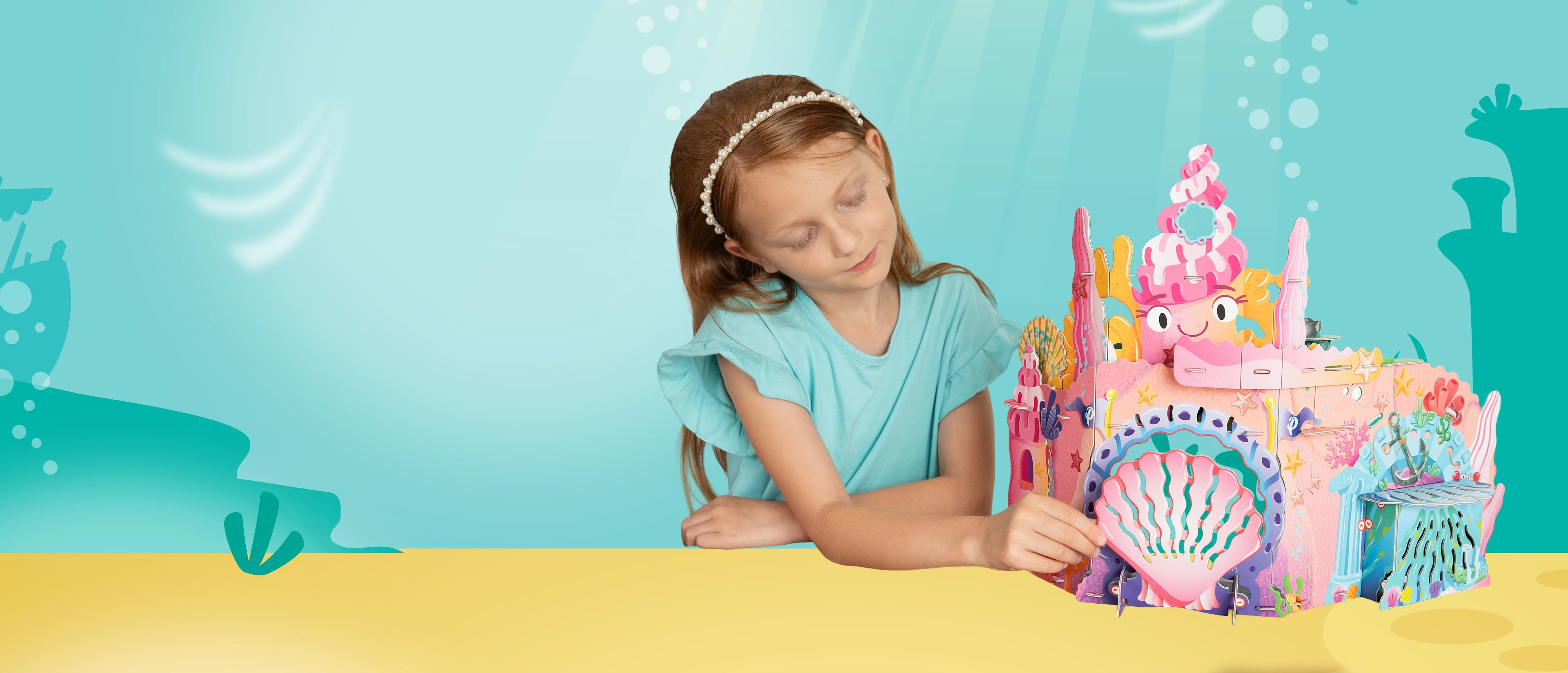
$0.00 USD
Majestic Mermaids taps the mermaid magic kids love, especially girls aged 3-7, with exclusive metallic-ink fins that shine. Playsets and Story Starter Cards keep them engaged and talking. Screen-free, open-ended, and tons of fun. For ages 3–7, pieces set up fast and pack away easily, so you can join in or let them lead.
Splash into imagination with shimmering fins and undersea fun!
Dive into storytelling with fishy friends and ocean magic.


Key Takeaways:
If your child is obsessed with mermaids, themed sets make it easy to start richer pretend play at home. How to encourage imaginative play? Offer a simple prompt, add two props, and ask open questions — then let your child lead.
How does playing with dolls help a child’s development? Character‑based pretend supports language, perspective‑taking, and self‑regulation. Our toys aren’t dolls — they’re buildable 3D figurines — yet they deliver similar narrative practice during free play.
Learn more in Playper’s article on play‑based learning and child development.
Read also:
With Playper toys, you can set a daily 10–15 minute play window. Offer two or three props, not a full bin. Model “yes—and” replies, then step back. Ask open questions lime Who, Where, and, And then what? — and let your child lead the scene.
Character play with dolls or buildable 3D figurines supports language, perspective‑taking, and self‑regulation. Kids narrate, negotiate roles, and practice conversation. You’ll often see richer vocabulary and more complex stories during free play at home.
Our Play sets and Story Starters are best for age 3 and up to 9. Guide the first build and even enjoy doing it with them - kids learn steps and storage habits quickly.
Aim for daily unstructured play spread across the day. Keep screens to limited, high‑quality viewing, ideally co‑viewed, and replace the rest with hands‑on activities. Short, frequent play bouts work better than one long block.
Use both. Build the scene to practice planning and fine‑motor skills, then draw cards to add characters, objects, and places. Five‑year‑olds enjoy retelling the same story with new twists - great for confidence and flexible thinking. The Story Starters cards is a fast start with just turning cards over, so it's the best to get started with usually.
Yogman, M., Garner, A., Hutchinson, J., Hirsh‑Pasek, K., & Golinkoff, R. (2018). The Power of Play: A Pediatric Role in Enhancing Development in Young Children. Pediatrics, 142(3), e20182058. https://publications.aap.org/pediatrics/article/142/3/e20182058/38649/The-Power-of-Play-A-Pediatric-Role-in-Enhancing
Quinn, S., Donnelly, S., & Kidd, E. (2018). The relationship between symbolic play and language acquisition: A meta‑analytic review. Developmental Review, 49, 121–135. https://www.sciencedirect.com/science/article/abs/pii/S0273229717301065
Macdonald, K., Milne, N., Orr, R., & Pope, R. (2020). Associations between motor proficiency and academic performance in mathematics and reading in Year 1 school children. BMC Pediatrics, 20, 267. https://bmcpediatr.biomedcentral.com/articles/10.1186/s12887-020-1967-8
Sella, F., Bucci, S., & Zorzi, M. (2023). Association between fine motor skills and early math skills in preschoolers. Frontiers in Psychology, 14, 1105391. https://www.frontiersin.org/journals/psychology/articles/10.3389/fpsyg.2023.1105391/full
Chassiakos, Y. L. R., Radesky, J., Christakis, D., Moreno, M. A., & Cross, C. (2016). Media and Young Minds. Pediatrics, 138(5), e20162591. https://publications.aap.org/pediatrics/article/138/5/e20162591/60503/Media-and-Young-Minds?autologincheck=redirected